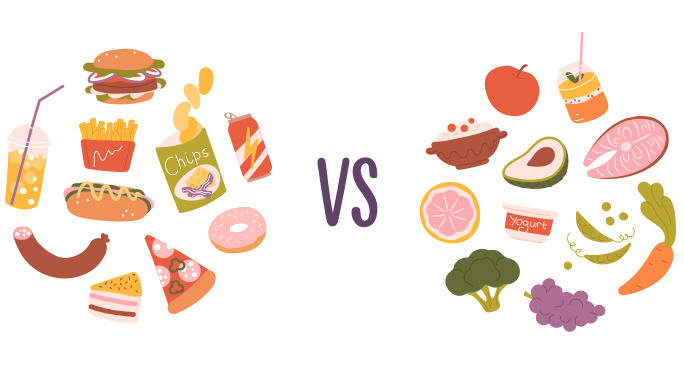
What is hyperpalatability?
Hyper meaning enhanced and palatable meaning appetising – a food or beverage that pleases the senses. Our tastebuds are home to many receptors which the brain transduces into flavours such as salty, sour, sweet, bitter and umami.
Hyperpalatable foods are calorie-rich and designed to ‘hit the spot’, but don’t offer much nutritional value. Often, the taste is so tempting that our ability to say no is suppressed, making it difficult to stop eating.
Why is taste important?
Taste is important because when the flavour is enjoyable it encourages us to eat – and we all need food to live. Plus, taste aversion warns us of toxic nutrients and food that may be disagreeable to our digestive system.
Taste is so much more than what our tongue perceives. Did you know that our senses are linked to cognitive behaviour? Research states, the combination of olfactory (smell) and gustatory (taste) stimulation are what enhance your taste experience. What you smell plays a dominant role in flavour perception. It’s why the aroma of fresh baked cookies makes our mouth water. Sometimes just conjuring up the memory is enough to get us drooling.

Does palatability affect food choice?
Yes! Food choice is based on two key factors: preference (palatability) and memory (how it made you feel). Palatability influences our food behaviour and eating habits. Plus, it plays an important role in regulating food intake.
It’s a widely accepted theory – humans are wired to choose food high in calories. Palatability has evolutionary origins. Even our forest-forging ancestors relied on taste to help them survive when food was scarce. Today, calorie-rich food is cheap and easily accessible, making it more difficult to resist the urge to choose hyperpalatable food over more nutritious options.
What’s the problem with hyperpalatable food?
Hyperpalatable food is often deficient in important nutrients, protein, and fibre. At the same time, it’s irresistibly delicious – and that’s a problem. Hyperpalatable food combines flavour-inducing ingredients – high in calories, fat, sugar, and salt – architected to leave you wanting more but adding little in terms of satiety or nutrition.
When food is hyperpalatable it signals your brain, stimulating its ‘reward pathways’ to say how much you enjoy the taste, convincing you that you want more – even if you’re not hungry. We taste it, we like it, we crave more of it. And this can lead to overeating, unhealthy behaviours, and increased risk of obesity-related health issues. True, we all need food to live. But for it to help the body thrive, it must supply you with enough energy/calories, vitamins, minerals, protein, and other important nutrients. Ideally, food choice should take precedence over taste alone.

What are some hyperpalatable foods?
The irresistible nature of hyperpalatable food is due to groupings of specific flavours: fat, sugar, and salt. Ingredient combinations (that normally wouldn’t occur on their own) offer a flavourful experience so tempting it may well become an unhealthy habit.
To avoid hyperpalatable foods beware of these flavour-induced combinations:
Fat and salt: bacon, burgers, and pizza
Fat and sugar: cakes and cookies
Carbohydrates and salt: pretzels, chips, and French fries
What can you do to avoid the health risks of hyperpalatable food?
When our modern lifestyles allow little time for hearty, healthy meals, what can we do to eat less hyperpalatable food?
• Everything in moderation. Remember, food isn’t your enemy.
• Base 80-90% of your diet around whole, nutrient-dense food to nourish your body. And leave 10-20% for treats that nourish your soul.
• Cook your own meals to better understand what you’re eating.
• Make it a habit to check nutrition labels, to be aware of the nutrients and calories you’re about to eat.
• Be mindful of ingredient clusters like fat and salt, fat and sugar, sugar and salt – key traits of hyperpalatable food.
• Beware of buffets! The stomach wants what the eyes see, so the greater the food diversity, the greater the risk of overeating.
REFERENCES:
Yamamoto, T. (2018, October). Central mechanisms of taste: Cognition, emotion and taste-elicited behaviors. https://www.sciencedirect.com/science/article/pii/S1882761608000549
Spence, Charles. (2015, November 4). Just how much of what we taste derives from the sense of smell? https://flavourjournal.biomedcentral.com/articles/10.1186/s13411-015-0040-2



